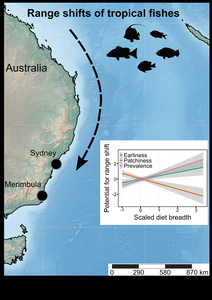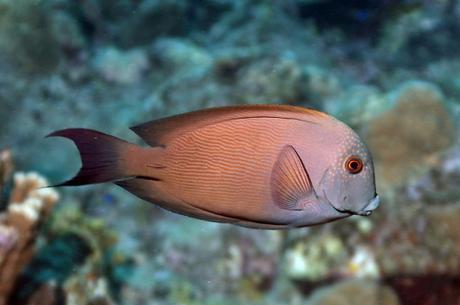 Ecologists often rely on measuring certain elements of a species’ characteristics, behaviour, or morphology to determine if these — what we call ‘traits’ — give them certain capacities to exploit their natural environments. While sometimes a bit arbitrarily defined, the traits that can be measured are many indeed, and sometimes they reveal rather interesting elements of a species’ resilience in the face of environmental change.
Ecologists often rely on measuring certain elements of a species’ characteristics, behaviour, or morphology to determine if these — what we call ‘traits’ — give them certain capacities to exploit their natural environments. While sometimes a bit arbitrarily defined, the traits that can be measured are many indeed, and sometimes they reveal rather interesting elements of a species’ resilience in the face of environmental change.
As we know, climate change is changing the way species are distributed around the planet, for the main (and highly simplified) reason that the environments in which they’ve evolved and to which they have adapted are changing.
In the simplest case, a warming climate means that there is a higher and higher chance you’ll experience temperatures that really don’t suit you that well (think of a koala or a flying fox baking in a tree when the thermometer reads +45° in the shade). Just like you seeking those nice, air-conditioned spaces on a scorcher of a day, species like to move to where conditions are more acceptable to their particular physiologies and behaviours.
When they can’t change fast enough, they go extinct.
Ecologists use life-history traits to predict which species have the highest probability of moving to new areas in response to climate change. Most studies into this phenomenon have largely ignored that range shifts in fact occur in sequential stages: (1) the species arrives in a new place for the first time, (2) its population increases in size (and extent), and (3) it can continue to persist in the new spot.

If we treat all stages of this process as a single ‘redistribution’ processes, and try to identify which traits lead to the best capacity, we’re probably ignoring that different traits likely dictate success in each category differently. In other words, what makes you a successful ‘arriver’, doesn’t necessarily make you a successful ‘stayer’.
We address this missing component in a new paper we’ve just had published online in Global Change Biology where we use the rich dataset collected by David Booth and his team over many decades describing the arrival of tropical fishes in the Sydney region of New South Wales.
Led by Cristián Monaco (now horribly based in horrid French Polynesia — how horrible for him), we analysed these surveys at the poleward edge of the distribution of these tropical species.
We found that the traits predisposing species to shift their ranges — such as large body size, broad latitudinal range, and long dispersal duration — did not drive the early stages of redistribution (arrival time and persistence). Instead, we found that diet breadth (the diversity of food types they eat) was the main contributor to propensity of certain species to be successful during these early stages.

What does this all mean? Basically, we probably should not try to predict which species will establish in new areas if we only take into account those traits that just describe the likelihood of moving in the first place. If we don’t also consider the traits that make these same species capable of establishing and persisting, we’re more likely to make erroneous predictions and be surprised by what really changes.
Full paper reference: Monaco, CJ, CJA Bradshaw, DJ Booth, BM Gillanders, DS Schoeman, I Nagelkerken. 2020. Dietary generalism accelerates arrival and persistence of coral-reef fishes in their novel ranges under climate change. Global Change Biology doi:10.1111/gcb.15221
CJA Bradshaw

